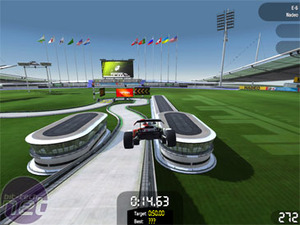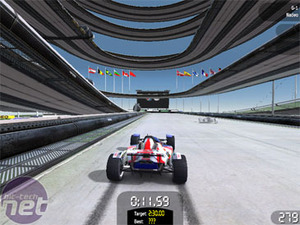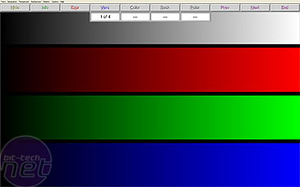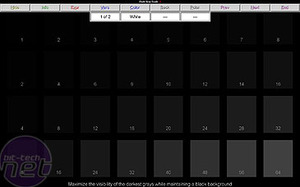Testing
As with any good monitor the ViewSonic features a good selection of colour configurations, allowing for individual adjustments of Colour, Brightness, Contrast and Colour Warmth with sRGB, 9,300K, 7,500K, 6,500K and 5,400K settings available.There is also a choice of OptiColor modes, with Standard, Text, Cinema, Game, Portrait, Scenery and Vivid to choose from as well as a choice of Skin Tone settings from Nature, Reddish and Yellowish.
This is a fairly comprehensive list of options and as an added bonus there's support for 1:1 pixel mapping. However, testing revealed that the monitor only did this accurately over D-Sub and not over Component or HDMI.
High Definition Video Playback
Playing back HD content on the VX2435wm is suitably impressive. Visuals are sharp, colourful and action is smooth. The display doesn't feature any kind of high contrast glossy coating, so black levels aren't as impressive as on some displays, but they’re still good enough and only a discerning eye will spot the very slight greyness that appears from time to time.When outputting 1080p over HDMI or Component with 1:1 pixel mapping enabled, the display added black bars all round the image. Considering 1080p (1920x1080) shares the same horizontal resolution as the native resolution of this display, there should only be bars at the top and bottom of the display.


Gaming
For our gaming tests, I fired up an office favourite, Trackmania Nations. It's a great test because there is plenty of motion and lots of colour. Performance was particularly good on the VX2435wm, as we saw no banding, decent colour reproduction and there experience was smooth during some of the faster sections of the game with no signs of ghosting.I also fired up Quake 4, which performed equally well. The display coped well with the blacks and again colour reproduction was generally very good. Overall, gaming on the VX2435wm was a pleasurable experience and there is very little to complain about on this front.


DisplayMate
Going through the DisplayMate tests the VX2435wm performed very well indeed. Colour reproduction was very impressive, producing good results in the Colour Tracking and Colour Scale tests, particularly in the high and low end of the spectrum. There was some evidence of compression in some of mid-range colours where the difference in tone is very subtle, but nothing very serious.Where the panel struggled, however, was in the Grey-Scale Compression and White-Level Saturation tests, where the more challenging examples were noticeably compressed. Happily, the Colour Purity and Screen Uniformity tests showed superb consistency across the panel, with no backlight bleeding or shading evident.

MSI MPG Velox 100R Chassis Review
October 14 2021 | 15:04









Want to comment? Please log in.